Kanazawa is a city where history echoes in every corner, from old samurai districts to storied temples. As you walk along quiet lanes, the wooden facades of merchant houses tell tales of commerce and resilience. You’ll feel a subtle connection to the past, noticing how even modern shops preserve elements of old design. Stroll through Kenrokuen Garden, once the private domain of feudal lords, and witness the careful balance of nature and human artistry. This interplay of new and old draws you in, inviting you to linger.

Embracing Kanazawa’s Past
- Must-See Landmarks: Explore Kanazawa Castle, wander the Higashi Chaya District, and visit the Nagamachi Samurai Quarter.
- Cultural Insight: Learn about Kaga Domain history, appreciate restored merchant houses, and understand the samurai code of honor.
- Photo Opportunities: Capture cobblestone alleys, traditional wooden facades, and quiet canals reflecting ancient charm.
source: Samuel and Audrey YouTube Channel: Nomadic Samuel + That Backpacker hosting
Tip: Arrive early in the morning to enjoy the historic districts before tour groups fill the streets, allowing you to savor their serenity.
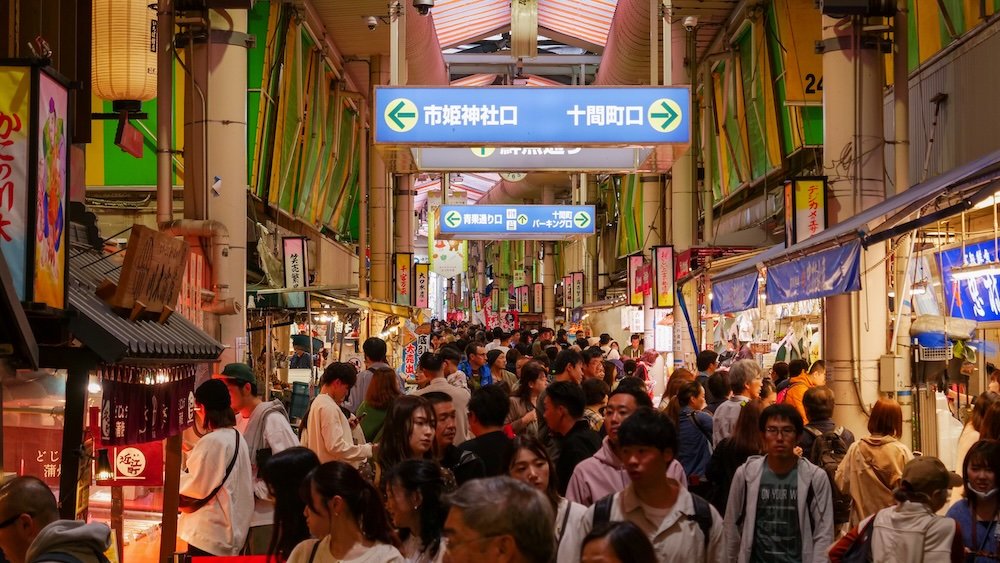
Top 18 Things To Do in Kanazawa, Japan For Visitors
To help you make the most of your time here, we’ve compiled a list of 18 must-experience spots. Let’s dive in.
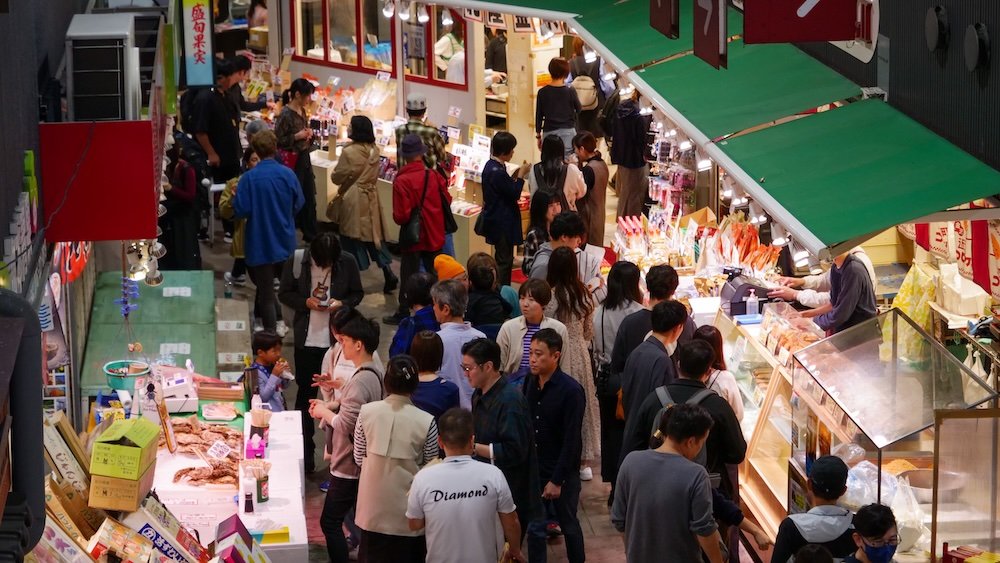
1) Omicho Market
Omicho Market has been Kanazawa’s kitchen for centuries, bustling with vendors who know their produce inside and out. Stroll through narrow aisles piled high with fresh fish, seasonal veggies, and fruit so vibrant it almost glows. The market’s atmosphere crackles with energy—locals haggle, chefs sample ingredients, and tourists snap photos of stunning seafood displays. Here, you can find delicate white shrimp from the nearby Sea of Japan or savory pickles steeped in local traditions. In between stands, discover small eateries serving sushi so fresh it practically melts in your mouth. Don’t just look—chat with vendors, taste samples, and soak up the scene. By the time you leave, you’ll better understand the flavors that shape Kanazawa’s culinary identity.
- Don’t Miss: White shrimp (shiro-ebi) delicacies, seasonal fruit stalls, and savory miso pickles.
- Best Time: Visit in the morning for the freshest catch and lively atmosphere.
- Local Tip: Try a seafood donburi at one of the small counter-style restaurants inside.
Tip: Bring cash; many small vendors don’t accept credit cards, ensuring a smooth shopping and snacking experience.
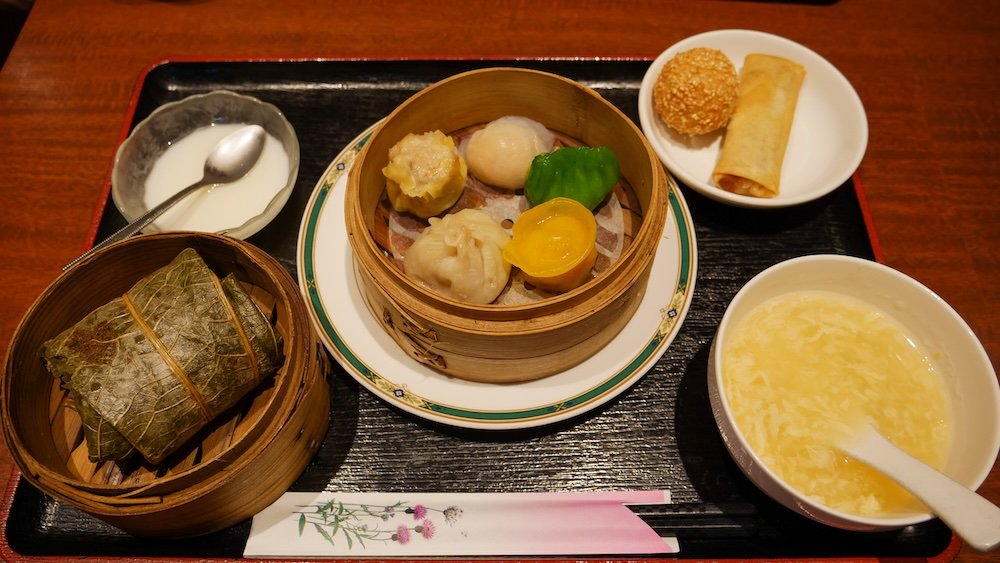
2) Sentou Mandarin Restaurant – 近江町海鮮中華 仙桃
A visit to Sentou Mandarin Restaurant offers a creative fusion of Chinese cuisine and Kanazawa’s abundant seafood. The menu might surprise you with dishes that blend classic Chinese techniques with locally sourced fish and shellfish. Sit by the window if possible, watching market-goers bustle below while you sip tea. Don’t hesitate to ask for recommendations—staff often suggest specialties featuring seasonal ingredients. Each bite feels fresh, balanced, and thoughtfully crafted, reflecting the chef’s passion for merging two culinary worlds. The casual atmosphere makes it an easy spot to refuel during a day of exploring. You’ll leave with a happy stomach and a newfound respect for culinary innovation in Kanazawa.
- Menu Highlights: Seafood stir-fry, shrimp dumplings, and crispy fish fillets in light sauces.
- Ambiance: Casual, market-adjacent setting perfect for lunch.
- Pairings: Try with local sake or a pot of fragrant jasmine tea.
Tip: Arrive early or reserve; it’s popular with both locals and visitors, and seating can fill up quickly.
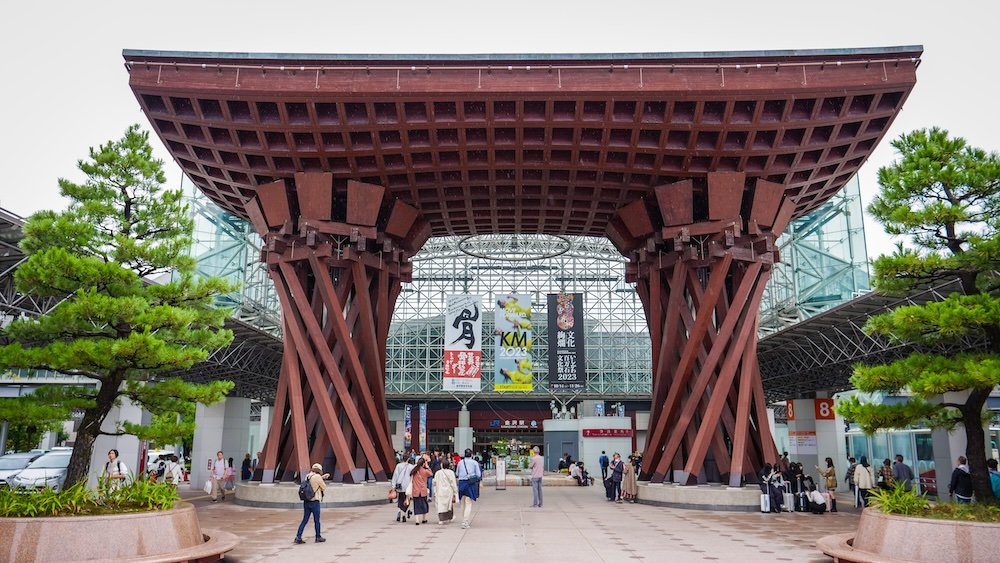
3) Tsuzumimon Gate at Kanazawa Station
The Tsuzumimon Gate welcomes you to Kanazawa Station, symbolizing tradition meeting modernity right from your first step. Its design, inspired by traditional hand drums, feels both grand and welcoming. Stand beneath its curved wooden structure, admiring how it frames the station’s futuristic glass dome behind it. This is no ordinary train hub—Kanazawa Station itself is a sight worth lingering over. Snap a few photos, enjoy the gentle sound of water features nearby, and watch travelers come and go. Even if you’re in transit, this spot sets the tone for Kanazawa’s harmonious blend of old and new. You’ll remember this architectural greeting long after you’ve departed.
- Photo Ops: Capture the gate’s wooden curves, the contrast with the glass dome, and passing travelers.
- Local Insight: Check out the station’s shopping area for souvenirs and snacks.
- Evening Vibe: Illuminations after dark create a magical atmosphere.
Tip: Pause a moment upon arrival; let the gate’s design remind you that you’ve entered a city proud of its heritage and future.

4) Izakaya Sakanayadojo
At Izakaya Sakanayadojo, you’ll experience the social side of Kanazawa’s dining culture in a cozy, bustling atmosphere. Pull up a stool and order a variety of small plates—fresh sashimi, grilled fish, and seasonal vegetable tempura. The izakaya vibe encourages mingling, whether with travel companions or friendly locals curious about your journey. Drinks flow easily, from sake to local beer, helping conversations spark. The place hums with laughter, clinking glasses, and the aroma of charcoal-grilled delicacies. It’s a chance to unwind after a day of sightseeing and immerse yourself in Kanazawa’s jovial hospitality. By evening’s end, you may have stories and connections you didn’t expect.
- Menu Must-Try: Seasonal sashimi platters, grilled squid, and sake pairings.
- Social Atmosphere: Chat with locals, share recommendations, and get insider tips.
- Late-Night Appeal: Opens late, perfect for a relaxed night out.
Tip: Order a variety of small plates and share—this is how izakaya culture shines, encouraging communal enjoyment.

5) Myoryuji Ninja Temple
Myoryuji Ninja Temple isn’t about flashy ninjas leaping from rafters; it’s about clever architecture, hidden passages, and secret chambers. Each floor and room reveals ingenious traps and escape routes used by samurai-era defenders. Listen closely as your guide explains how these cunning designs protected occupants from intruders. Steep staircases, false ceilings, and concealed rooms add layers of intrigue to your visit. It’s a peek into Kanazawa’s feudal past, where safety and strategy trumped luxury. You’ll leave impressed by the resourcefulness and cunning that shaped this remarkable building. This isn’t your average temple—prepare for surprises at every turn.
- Tour Tips: Guided tours mandatory, book in advance, English explanations available.
- Highlights: Hidden staircases, secret doors, and clever architectural illusions.
- No Photography: Certain areas restrict photos to preserve the atmosphere.
Tip: Wear comfortable shoes; you’ll navigate narrow steps and hidden passages with more ease.
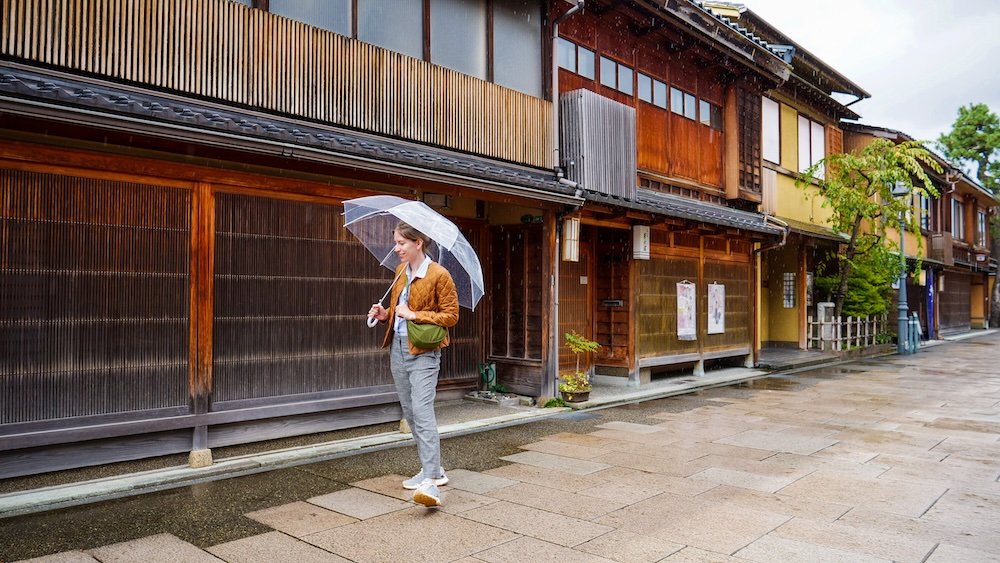
6) Nishi Chaya District
The Nishi Chaya District offers a quieter, more intimate version of Kanazawa’s traditional teahouse quarters. Wander along its short streets lined with wooden facades that once hosted geisha performances and tea ceremonies. The vibe here is serene, perfect for a leisurely afternoon stroll. Peek into small artisan shops, maybe pick up a handcrafted souvenir or two. Less crowded than its eastern counterpart, Nishi Chaya invites you to slow down, listen to footsteps on old pavement, and imagine times past. You might even spot a geisha on her way to a private engagement. Each step here feels like stepping back in time.
- Photo Spots: Capture wooden townhouses, traditional lanterns, and quiet alleyways.
- Café Break: Enjoy a cup of tea at a small café with a view of old architecture.
- Cultural Notes: Learn about geisha culture and the district’s historic role in Kanazawa nightlife.
Tip: Visit in late afternoon when light softens, casting warm hues on wooden exteriors for stunning photos.
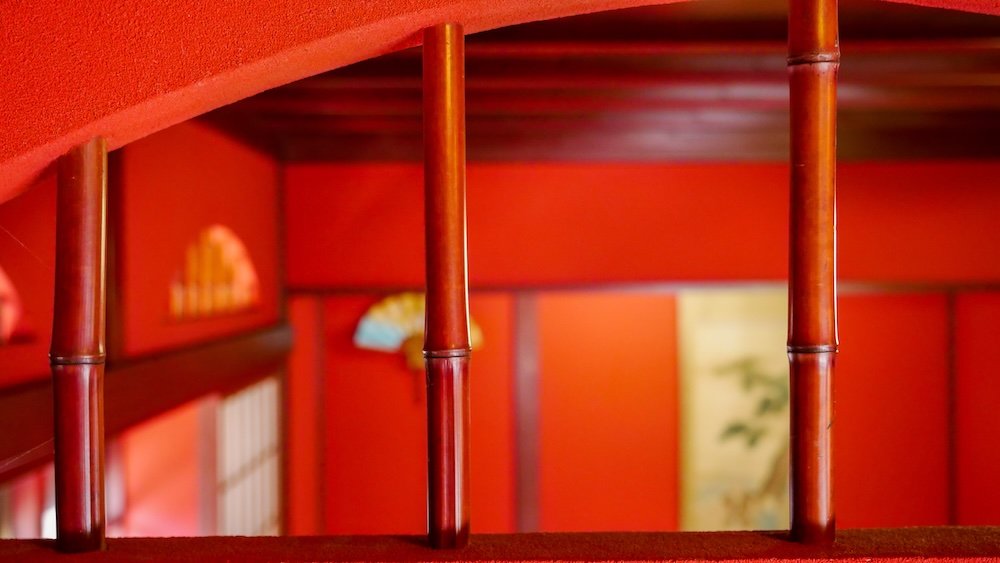
7) Kanazawa Nishi-chaya Museum
The Kanazawa Nishi-chaya Museum offers a deeper understanding of the district’s heritage. Inside, exhibits detail the lives of geisha, the teahouses’ social importance, and their role in Kanazawa’s cultural tapestry. You’ll see instruments, tea utensils, and attire that paint a vivid picture of elegant entertainment. The small space feels intimate, encouraging you to linger and absorb stories from a bygone era. Knowledgeable staff can answer questions, helping bridge past and present. This isn’t just a collection of artifacts—it’s a window into traditions that shaped Kanazawa’s identity. Leave with a richer appreciation for the subtle grace that defined these communities.
- Must-See Exhibits: Geisha kimonos, tea ceremony implements, and traditional musical instruments.
- Interactive Elements: Some displays offer English explanations, adding depth to your visit.
- Short and Sweet: A compact museum that fits easily into your itinerary.
Tip: Combine with a walk around Nishi Chaya District; the museum adds context to the streets you’ve just explored.

8) Ninja Weapon Museum
At the Ninja Weapon Museum, embrace your inner history buff—or action movie fan—and learn about the clandestine warriors who once prowled Japan’s shadows. Exhibits showcase throwing stars, hidden blades, and climbing tools that defined the ninja’s stealthy arsenal. Historical context explains how these weapons were used strategically rather than senselessly. It’s part education, part entertainment, especially if you have kids or enjoy unconventional attractions. The museum provides English info, ensuring you won’t miss intriguing details. You’ll leave understanding that real ninjas relied on cunning, patience, and subtlety as much as sharp steel. It’s a quirky but memorable stop in Kanazawa’s cultural landscape.
- Highlights: Throwing stars (shuriken), grappling hooks, and concealed daggers.
- Contextual Info: Learn about ninja tactics, espionage methods, and code of conduct.
- Fun Factor: Great for families or action-enthusiasts looking beyond traditional museums.
Tip: Ask staff questions; they often share extra stories not posted on signs, adding color to your experience.
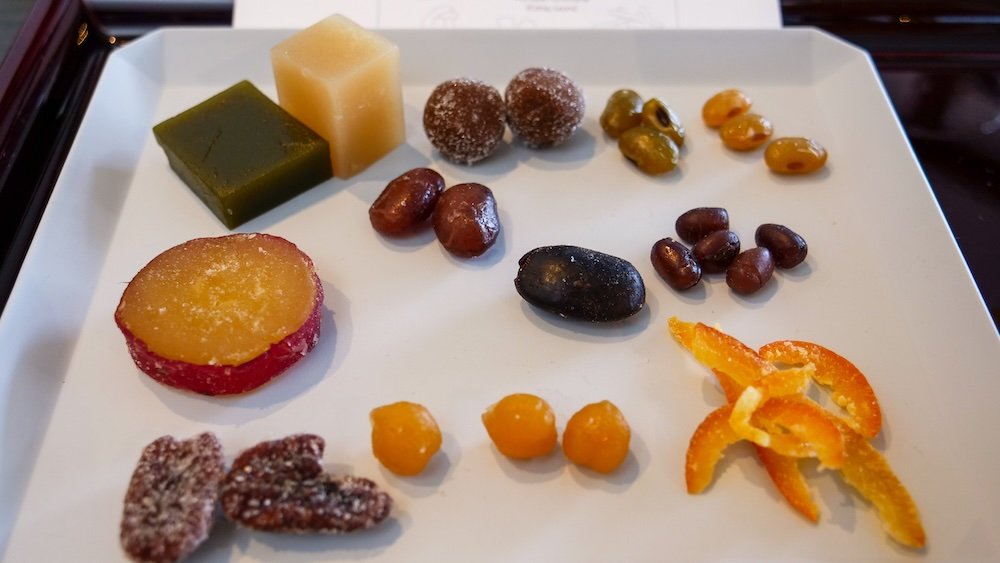
9) Amanatto Kawamura Tea House – 甘納豆かわむら
Amanatto Kawamura Tea House is a sweet oasis, famous for its amanatto—candied beans that are surprisingly addictive. Slide open the door and step into a world of delicate confections and quiet hospitality. Sample a few varieties; the subtle sweetness pairs perfectly with hot tea. The serene interior and gentle conversation create a calming break from sightseeing. Savor each bite, noticing how flavors bloom slowly on your palate. Grab a few packages as souvenirs, offering friends at home a taste of Kanazawa’s refined treats. By the time you step back outside, you’ll feel refreshed and a little sweeter inside.
- Must-Try Sweets: Amanatto (candied beans), seasonal wagashi, and green tea mochi.
- Atmosphere: Intimate, tranquil, and perfect for quiet reflection.
- Gift Options: Packaged sweets make elegant presents.
Tip: Taste a few samples before buying; discover which flavor suits your palate best.
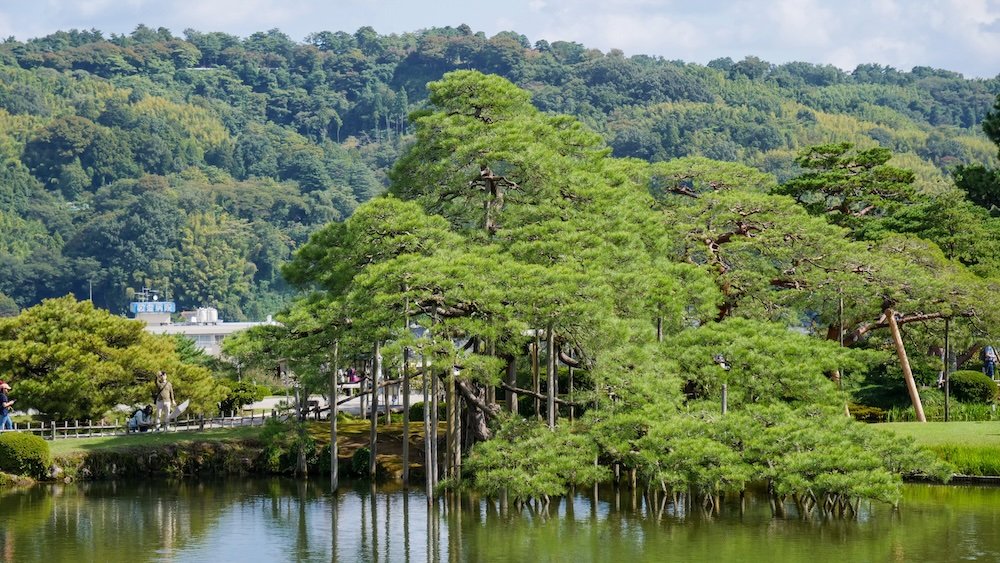
10) Kenrokuen Garden
Kenrokuen Garden ranks among Japan’s top three gardens for good reason—it’s a masterpiece of landscape design. Stroll across bridges spanning quiet ponds, admire lanterns reflected in still waters, and pause beneath meticulously pruned pines. Each season transforms the garden’s character: cherry blossoms in spring, lush greens in summer, fiery maple leaves in autumn, and snow-draped serenity in winter. Don’t rush; sit on a bench and watch carp swim lazily, or listen to rustling leaves overhead. The garden’s name means “combining six attributes,” and you’ll sense this harmony as you explore. This isn’t just scenery; it’s a philosophy of beauty manifested in nature. Leave feeling more grounded, calm, and appreciative of subtle artistry.
- Photo Tips: Capture the Kotoji Lantern, seasonal blossoms, and reflections on the water’s surface.
- Best Time to Visit: Early morning or late afternoon for soft light and fewer crowds.
- Nearby Treats: Enjoy a matcha tea break at a teahouse inside or near the garden.
Tip: Pick up an English map; it highlights key spots, ensuring you don’t miss iconic viewpoints.
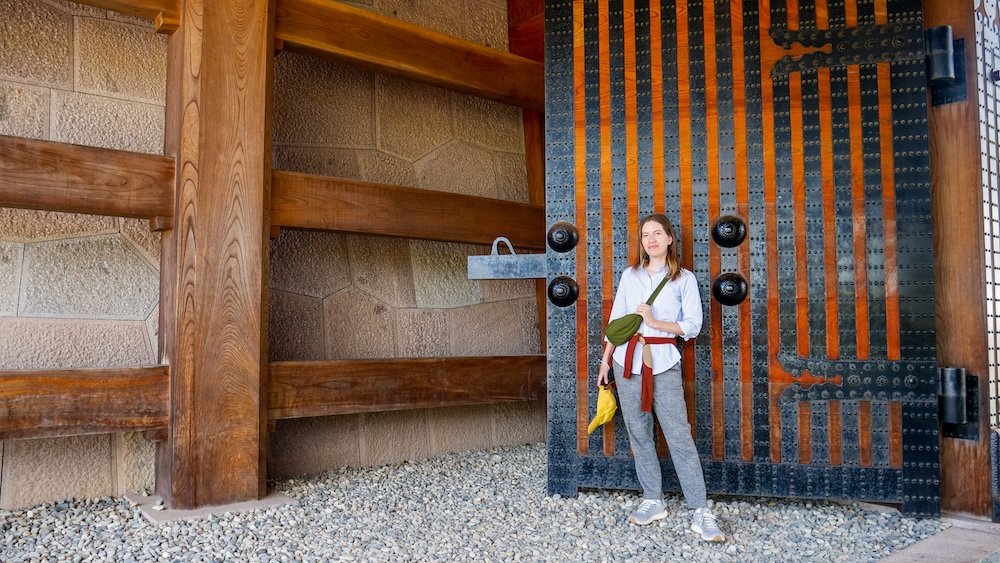
11) Kanazawa Castle Park
Next to Kenrokuen lies Kanazawa Castle Park, once home to the powerful Maeda clan. Explore restored gates, imposing walls, and towering turrets that hint at samurai power and prestige. The lawns and cherry trees soften the fortress’s aura, creating an inviting space for picnics and leisurely walks. Inside some reconstructed sections, you’ll learn about architectural techniques designed to withstand weather and conflict. The blend of sturdy defenses and elegant design reveals much about feudal Japan’s priorities. You’ll feel history beneath your feet, imagining the clank of armor and distant drum signals. By day’s end, you’ll see Kanazawa’s castle not just as a relic, but as a living chapter in the city’s story.
- Must-See Structures: Ishikawa Gate, Kahoku-mon Gate, and the restored Gojukken Nagaya storehouse.
- Seasonal Views: Cherry blossoms in spring, lush greenery in summer, and vivid leaves in autumn.
- Leisurely Vibe: Perfect for picnics, strolling, or a short rest on a shady bench.
Tip: Combine with Kenrokuen Garden next door for a full historical and scenic experience in one afternoon.
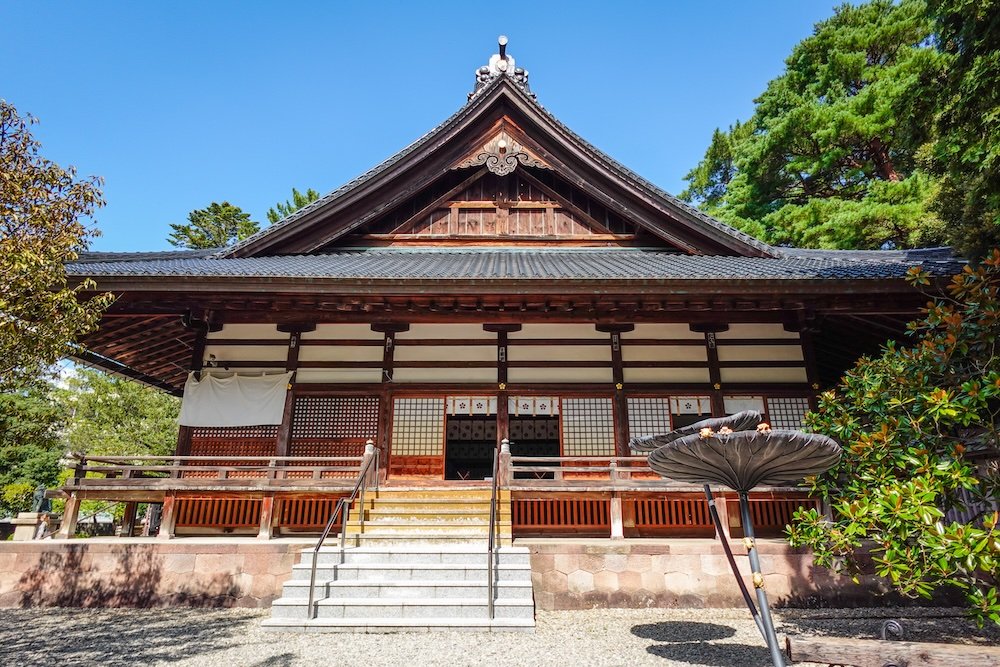
12) Oyama Shrine
Oyama Shrine honors Lord Toshiie Maeda and his contributions to Kanazawa’s prosperity. Passing through its unique, Western-influenced gate, you enter a tranquil realm blending Shinto traditions with a hint of foreign style. Lanterns, stone paths, and towering trees create a serene escape from the urban bustle. Inside, admire subtle details like stained-glass windows—a rare sight in a Japanese shrine. This fusion symbolizes Kanazawa’s openness to cultural exchange throughout history. Offer a small prayer, breathe in the cedar-scented air, and appreciate the shrine’s quiet dignity. You’ll leave feeling spiritually refreshed, connected to a deeper sense of place.
- Highlights: The unique, multi-styled shrine gate, serene pond garden, and peaceful prayer corners.
- Cultural Insight: Understand how Maeda’s legacy shaped Kanazawa’s development.
- Timing: Early morning or late afternoon for a calm, contemplative atmosphere.
Tip: Explore all corners; hidden nooks and smaller shrines may reveal unexpected beauty or inscriptions.
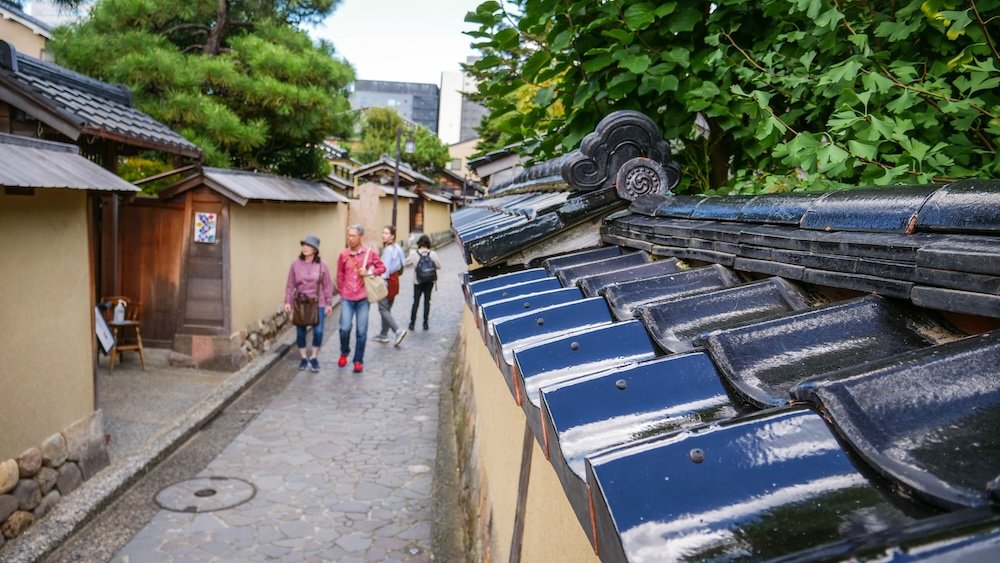
13) Naga-machi District
The Naga-machi District was once home to samurai families, and its earthen walls, narrow lanes, and winding canals still whisper tales of loyalty and valor. Walk slowly, noticing subtle variations in walls, gates, and cobblestone textures. The district feels intimate, as if each turn leads deeper into another time. Some restored residences open their doors, offering glimpses of samurai-era interiors. Don’t miss small museums detailing local warrior culture and family lineages. Evening light softens the scene, making it even more atmospheric. You’ll leave feeling that history isn’t just preserved here—it’s alive in every quiet corner.
- Photo Ops: Earthen walls, wooden gates, and reflections in canal waters.
- Cultural Stops: Visit the Nomura Family Samurai House for direct insight into samurai life.
- Quiet Charm: Less crowded than main tourist areas, ideal for a calm stroll.
Tip: Wear comfy shoes; uneven paths and steps require stable footing for a relaxed experience.
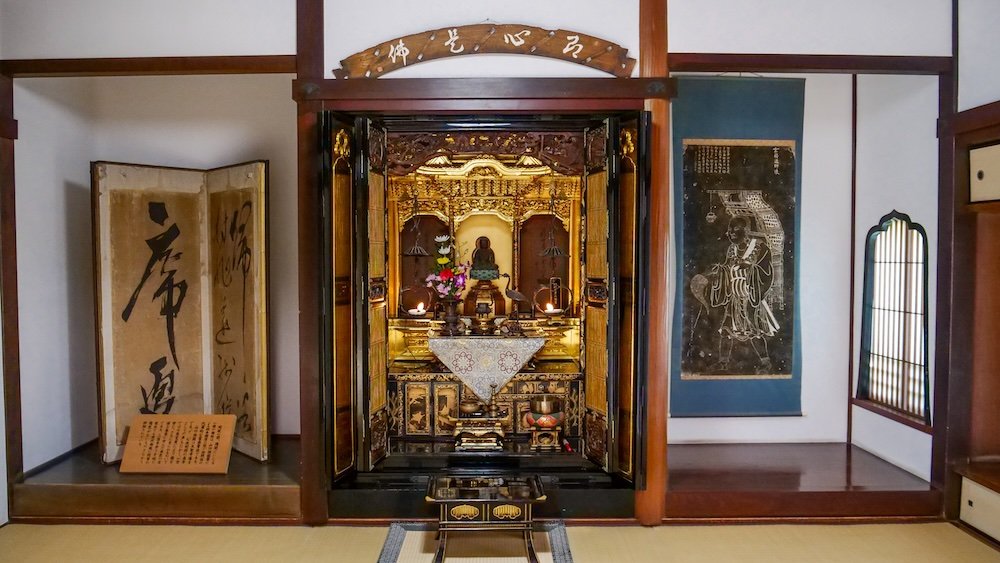
14) Ancient Site of Samurai House
The Ancient Site of Samurai House offers a tangible link to feudal times, where hierarchical structures ruled daily life. Step inside restored interiors—low doorways, tatami mats, and simple furnishings hint at the modest elegance samurai favored. Guided explanations reveal the balance between martial training and intellectual pursuits. Admire the small gardens, symbolic of mindfulness and beauty amid a warrior’s routine. The silence and simplicity contrast strikingly with modern bustle outside. In these quiet rooms, you sense discipline and honor as lived values. Depart with deeper respect for the complexity behind the samurai’s stoic exterior.
- Key Features: Traditional tatami rooms, minimalist décor, and subtle garden arrangements.
- Cultural Context: Understand samurai class structures, family roles, and daily routines.
- Reflections: A chance to compare historical ideals with today’s lifestyles.
Tip: Ask questions; staff often share anecdotes that bring the samurai world vividly to life.
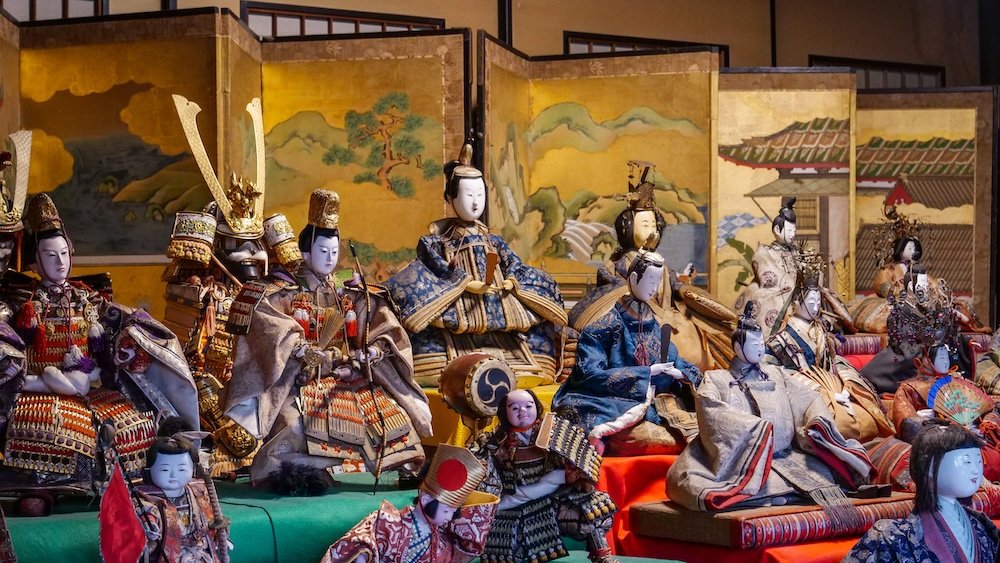
15) Teahouse with garden and dolls – 茶房 似故礼(ニコレ)
Teahouse NikoRe (茶房 似故礼) blends traditional aesthetics with whimsical touches—like a collection of dolls peering quietly from corners. Settle into a seat facing the garden, where mossy stones and miniature landscapes create a soothing backdrop. Enjoy matcha and seasonal sweets, each crafted with care. The dolls add a playful twist, creating an atmosphere both nostalgic and slightly surreal. It’s a place where old meets new, elegance meets whimsy. You might find yourself lingering, lost in thought or admiring a particular doll’s painted expression. By the time you finish your tea, you’ll have savored not just flavors, but a gentle, imaginative escape.
- Menu Highlights: Matcha tea sets, wagashi sweets, and occasional seasonal specialties.
- Atmosphere: Intimate, quiet, with a quirky doll collection adding character.
- Garden View: Small but enchanting, ideal for daydreaming.
Tip: Embrace the unusual; the dolls might seem odd at first, but they’re part of the teahouse’s unique charm.
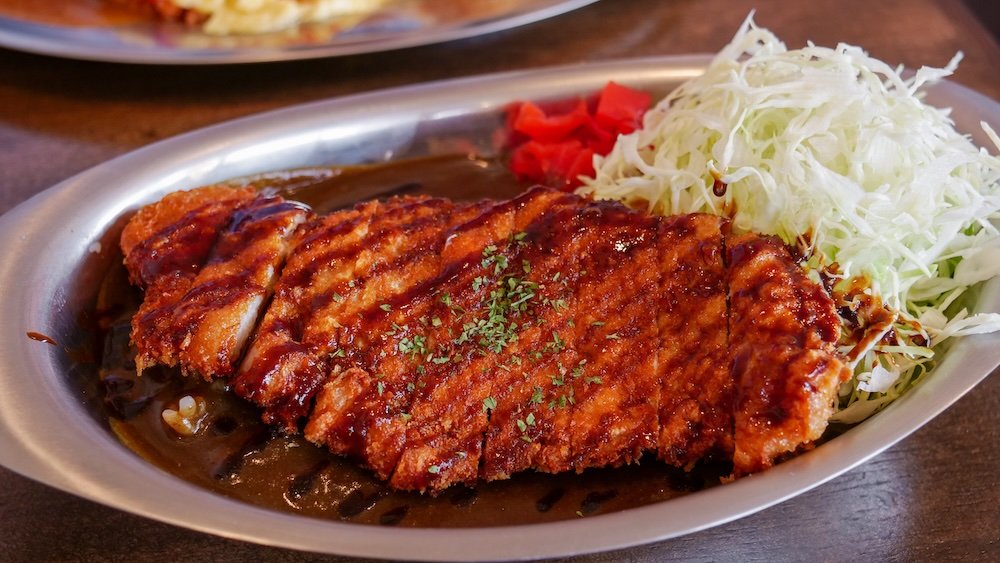
16) Kanazawa Curry – 金沢カレー&ハントンライス だいだい
Kanazawa Curry is a local institution, thick, rich, and slightly sweet, served over rice and often topped with a crispy cutlet. At “Kanazawa Curry & Hanton Rice Daidai,” indulge in a comforting plate that warms body and soul. The sauce’s deep hue and velvety texture differ from other Japanese curries. Pair it with a side of shredded cabbage for crunch and balance. Hanton rice—an omelet-topped dish with seafood—is another highlight if you want to try something different. Casual and filling, it’s perfect after a day of walking. You’ll leave with a happy belly and a flavor memory unique to this region.
- Must-Try: Classic Kanazawa curry with tonkatsu, Hanton rice, and optional spicy additions.
- Portion Sizes: Generous servings—arrive hungry or consider sharing.
- Family-Friendly: Easy menu for all ages, simple and satisfying.
Tip: Don’t be shy about asking for extra cabbage; it’s free and helps cut the curry’s richness.
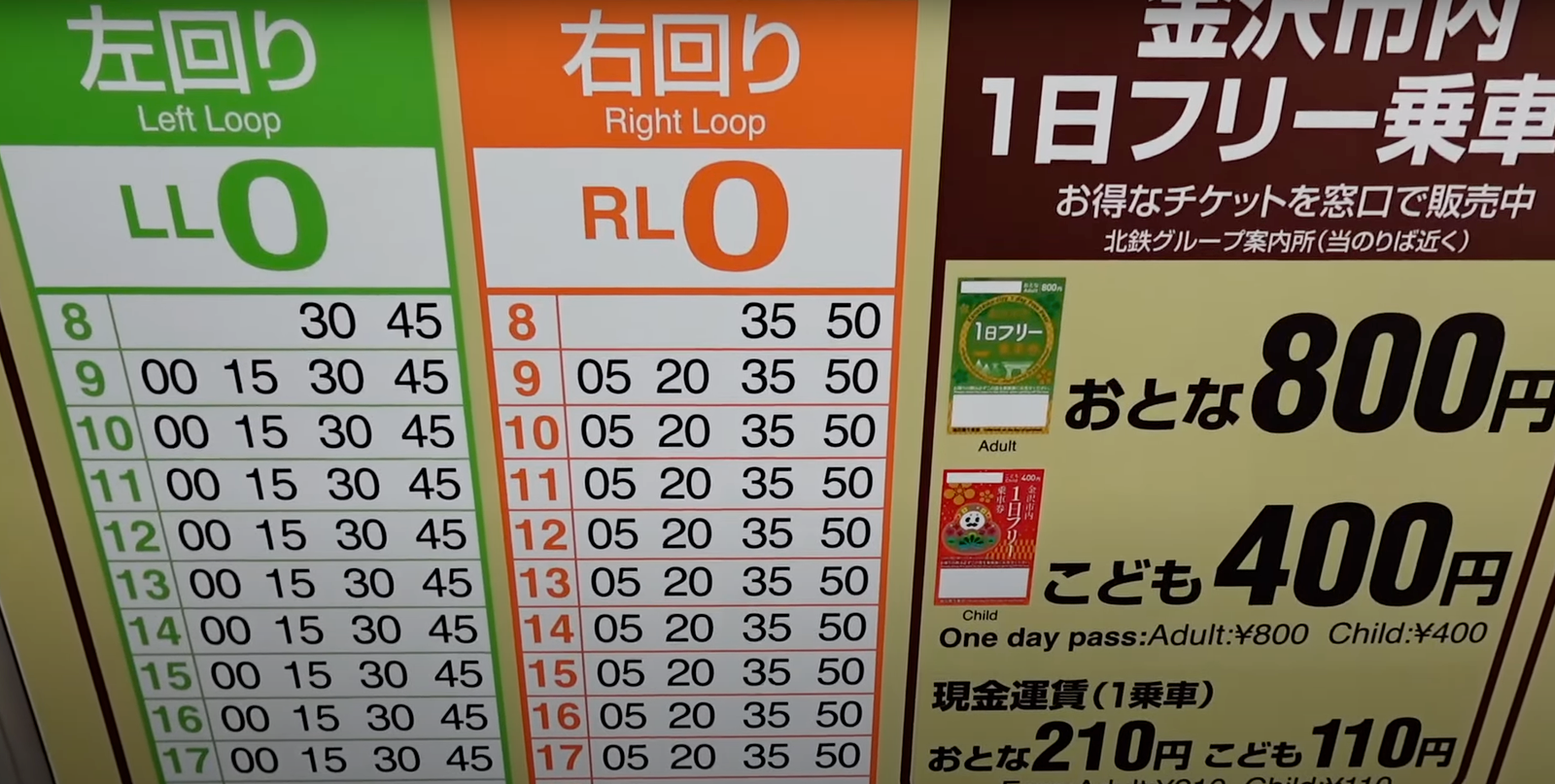
17) Kanazawa Bus Loop
Kanazawa Bus Loop provides a hassle-free way to hop between major attractions without worrying about directions. Brightly colored buses circle the city, stopping near museums, historic districts, and gardens. Buy a day pass and enjoy unlimited rides, jumping off whenever something catches your eye. Onboard announcements and signage help you know when to disembark. It’s a great option for first-timers who want a stress-free introduction to the city. Riding the loop might even reveal lesser-known neighborhoods worth exploring later. By the end of the day, you’ll appreciate how easy it can be to see a lot without sacrificing comfort.
- Convenience: Stops near Kenrokuen, Kanazawa Castle, and major districts.
- Ticket Options: Day passes often available, cost-effective for multiple rides.
- Accessibility: English announcements and maps assist non-Japanese speakers.
Tip: Plan a rough route beforehand so you can make the most of each bus pass stop, minimizing aimless waiting.

18) Saizeriya Restaurant
Saizeriya might not scream “traditional Japan,” but it’s a beloved, budget-friendly Italian chain that locals enjoy as a casual hangout. Order simple pastas, pizzas, or salads—familiar comfort food after days of seafood and intricate dishes. The atmosphere is relaxed, ideal for a quick meal or a glass of affordable wine. It’s a taste of how global influences coexist with Kanazawa’s heritage. Sometimes, taking a break from traditional cuisine helps refresh your palate. Enjoy the friendly service, consistent quality, and wallet-friendly prices. You’ll leave reminded that Kanazawa embraces both old-school charm and modern cosmopolitan tastes.
- Menu Staples: Affordable pastas, margherita pizza, and grilled veggies.
- Drink Deals: Inexpensive house wine and soft drinks make it budget-traveler friendly.
- Cultural Context: See how locals adapt international chains into their dining routines.
Tip: Stop by if you need a quick, familiar bite—ideal for recharging before more local culinary adventures.
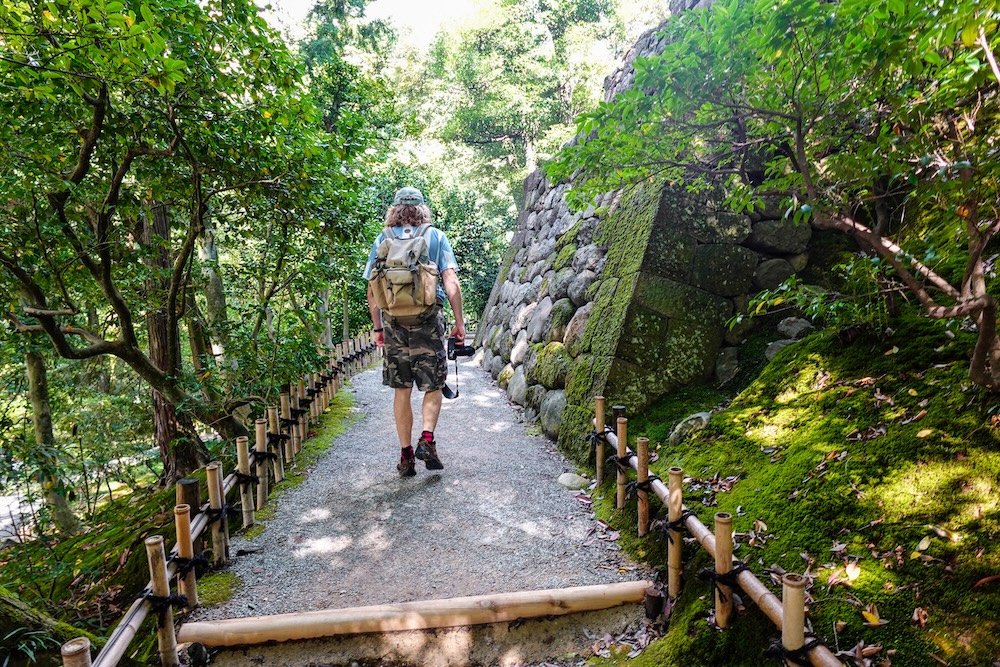
Tours For Visitors To Kanazawa, Japan
Here are some tours to consider for those visiting Kanazawa.

1) Historic Walking Tour
This Historic Walking Tour is a perfect introduction for first-timers, guiding you through samurai districts, old merchant streets, and remnants of feudal grandeur. You’ll stroll along narrow lanes where wooden facades whisper stories of wealth, power, and changing times. A knowledgeable guide weaves together tales of the Maeda clan, ancient clans who once ruled these lands, and the craftsmanship that made Kanazawa prosper. Expect casual conversation, gentle humor, and ample time to snap photos without feeling rushed. By the end, you’ll feel anchored in Kanazawa’s past, appreciating how centuries-old traditions shape its modern spirit.
- Highlights: Explore the Naga-machi Samurai District, pass through Kanazawa Castle Park, and admire traditional architecture at every turn.
- Group Size: Small, ensuring personal attention, room for questions, and comfortable pacing.
- Flexibility: Consider a customized route, adding stops like a small museum or hidden shrine.
Tip: Wear comfortable walking shoes; the city’s historic streets deserve a leisurely, unhurried pace.

2) Tea Ceremony and Garden Tour
On this Tea Ceremony and Garden Tour, discover why Kanazawa’s gardens and tea houses rank among Japan’s finest cultural experiences. You begin with a stroll through Kenrokuen Garden, pausing at carefully crafted viewpoints, tranquil ponds, and gnarled pines shaped over decades. A tea master then welcomes you into a tatami-mat room, teaching you the graceful rituals behind matcha preparation. Sip from a delicate bowl, taste subtle wagashi sweets, and feel time slow down as you savor each moment. The interplay of season, flavor, and quiet contemplation leaves you refreshed and more attuned to nature’s rhythms.
- Essentials: Bring an open mind, camera for garden views, and maybe a small sketchbook for impressions.
- Cultural Notes: Learn about tea ceremony etiquette, appreciate matcha’s bitterness, and observe seasonal themes in décor.
- Duration: Perfect for a morning escape or a late-afternoon wind-down before dinner.
Tip: Arrive with minimal expectations; letting the ceremony unfold naturally heightens its soothing effect.
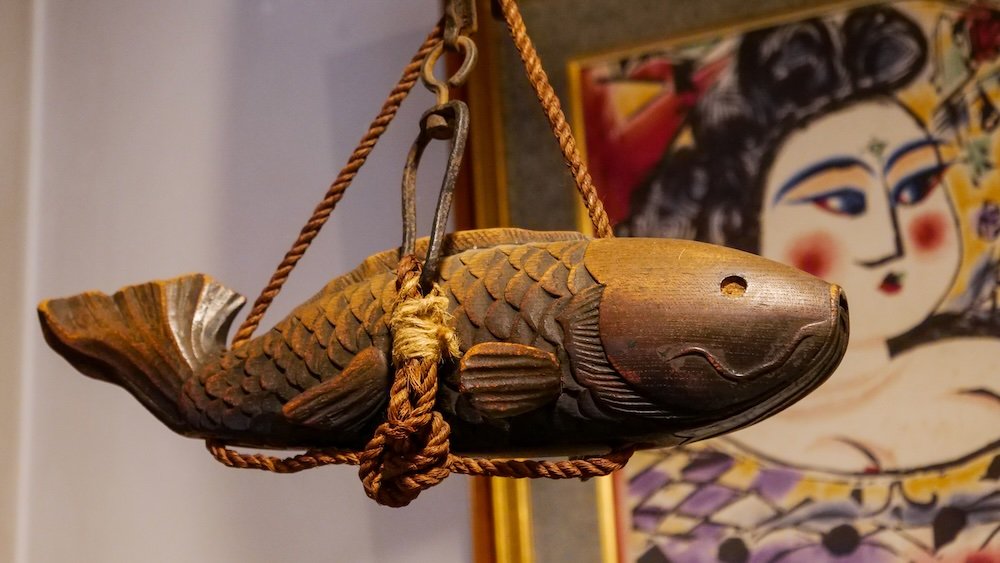
3) Arts and Crafts Tour
This Arts and Crafts Tour offers hands-on experiences with artisans who keep Kanazawa’s creative legacy thriving. You’ll visit studios where gold leaf is pressed thin as a whisper, lacquerware emerges glossy and smooth, and washi paper sheets dry in gentle breezes. Rather than just observing, you might try your hand at a simple project, guided by patient experts. Each shop tells a story—of generations perfecting techniques, adapting to modern tastes, and passing secrets from mentor to apprentice. By day’s end, you’ll carry not just a souvenir, but a richer understanding of the artistry that enriches daily life here.
- Art Forms: Witness gold leaf application, discover Kutani pottery, and learn washi paper making.
- Interactive Fun: Some tours include mini-workshops, letting you craft a small memento.
- Insider Tips: Get recommendations for local galleries, find off-the-beaten-path shops, and learn about artisan fairs.
Tip: Ask questions—most artisans welcome genuine curiosity and enjoy sharing their creative process.

4) Culinary and Market Tour
A Culinary and Market Tour dives into Kanazawa’s vibrant food scene, starting at Omicho Market, where you’ll sample fresh produce and marine delicacies. A guide helps you navigate unfamiliar ingredients, explaining how local catches, seasonal vegetables, and region-specific pickles define Kanazawa’s palate. You’ll taste bites of sushi that melt on your tongue, nibble on sweet treats, and maybe try an unusual snack you’d never pick on your own. Heading beyond the market, a stop at a family-run eatery introduces signature dishes like Kanazawa curry or delicately seasoned soups. By the end, your stomach and mind brim with new flavors, culinary confidence, and a wish you could pack it all up and take it home.
- Must-Try Foods: Sample white shrimp sushi, savor seasonal fruit, and discover miso-pickled vegetables.
- Local Insights: Learn which ingredients peak in each season, understand traditional cooking methods, and spot food trends.
- Comfort Zones: Challenge yourself—taste something unfamiliar, embrace new textures, and trust local guidance.
Tip: Arrive hungry; a curious appetite is your best companion on this gastronomic adventure.
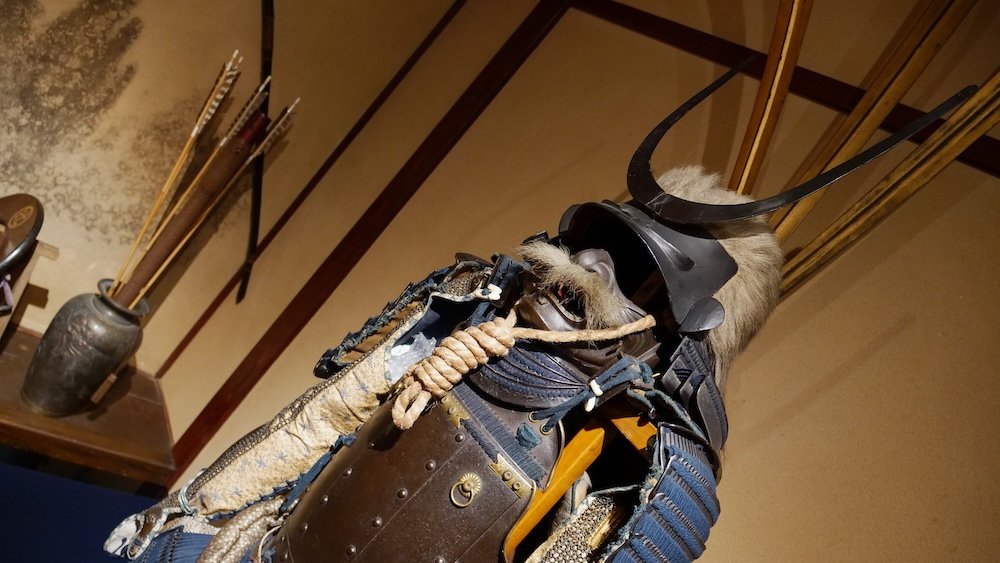
5) Samurai and Geisha Heritage Tour
The Samurai and Geisha Heritage Tour immerses you in Kanazawa’s refined past, where honor, beauty, and artistry guided daily life. You’ll visit former samurai residences, discovering how architecture balanced practicality and grace. Then head to a teahouse district—Higashi or Nishi Chaya—where geisha performed subtle arts for discerning audiences. A guide shares anecdotes of legendary samurai, iconic courtesans, and the social hierarchies that once shaped these neighborhoods. By walking these streets, peering into modest homes and elegant lounges, you connect with a living history that resonates in the quiet footsteps and wooden beams around you.
- Key Districts: Explore Naga-machi for samurai houses, Higashi or Nishi Chaya for geisha culture, and seek small museums for context.
- Cultural Nuances: Learn how samurai code influenced family life, understand geisha training, and appreciate refined entertainments.
- Dress the Part: Some tours let you rent kimono, adding authenticity and fun to your journey.
Tip: Listen closely to your guide’s stories; these narratives turn silent walls into vivid storytellers.
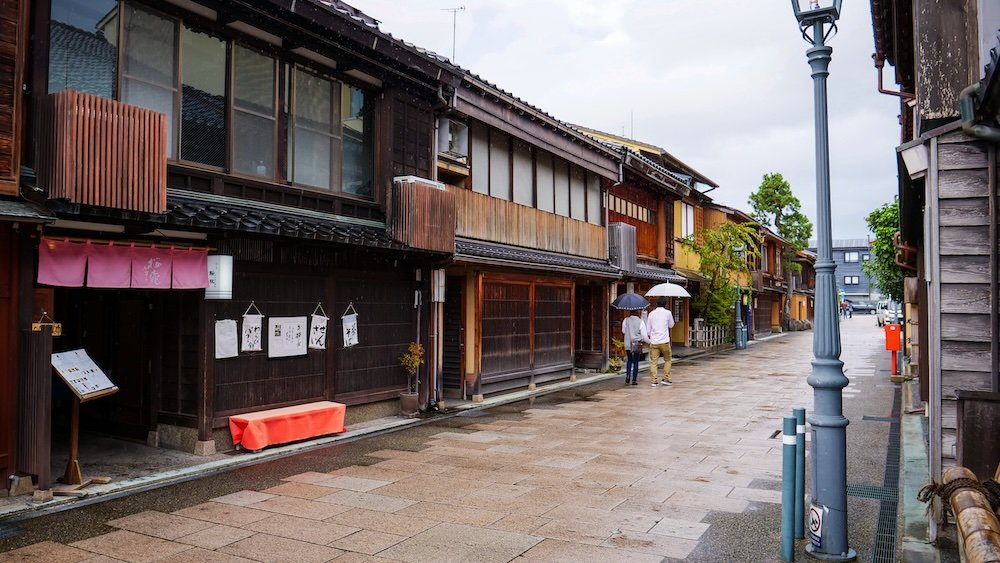
Kanazawa Accommodations Guide: Hotels, Guesthouses and Hostels
Let’s explore accommodation options in Kanazawa.

Hotels
Hotels in Kanazawa offer a blend of modern convenience and subtle regional flair, making them ideal for travelers who appreciate comfort without sacrificing local character. Many are located near the station, simplifying late arrivals or early departures. Expect front-desk staff who can provide insider tips, from must-see cultural spots to the best sushi counters tucked away in quiet alleys. Rooms often showcase warm wood accents, plush bedding, and sometimes a glimpse of the mountains beyond the city’s edge. Whether you crave a spacious suite or a cozy single, you’ll find a range of options to match your style and budget.
- Amenities: In-room Wi-Fi, on-site dining, and sometimes public baths (onsen) for relaxation.
- Location Perks: Proximity to train stations, major attractions, and convenient shopping areas.
- Extra Services: Luggage storage, concierge recommendations, and bike rentals in select properties.
Tip: Book ahead during peak seasons to snag better rates and your preferred room type.
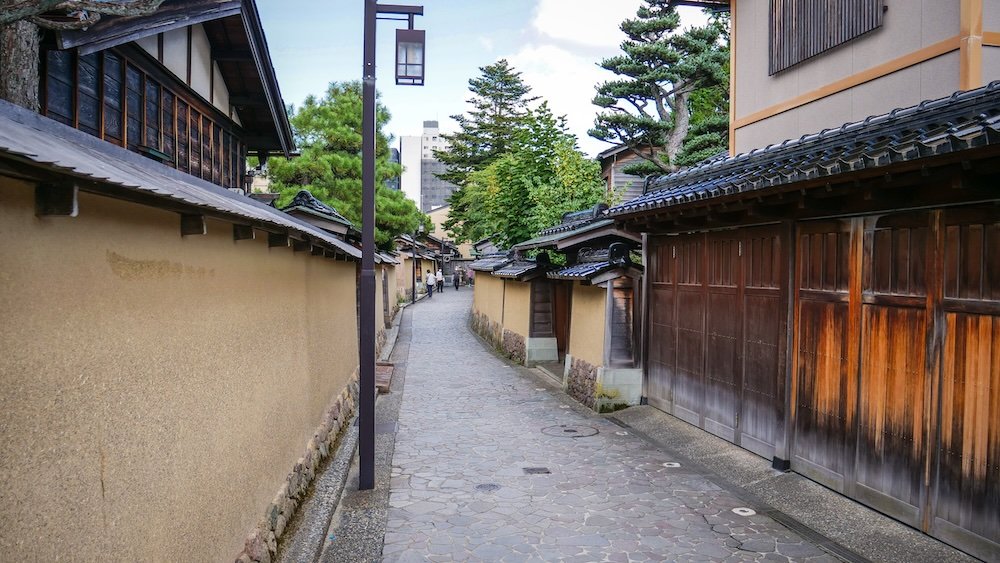
Ryokans
For an immersive, traditional experience, consider staying at a ryokan, where tatami floors, sliding shoji doors, and yukata robes transport you to a simpler era. Evenings often feature kaiseki dinners, multi-course feasts that highlight seasonal ingredients prepared with elegance. Wake up early to sip tea while gazing at a serene inner garden or listening to the hush of a nearby stream. Staff pride themselves on warm hospitality, guiding you through customs like onsen bathing and tea ceremonies with gentle patience. Spending a night in a ryokan isn’t just lodging—it’s an encounter with Japan’s aesthetic soul.
- Atmosphere: Quiet, intimate, and rooted in centuries-old traditions.
- Culinary Delights: Exquisite kaiseki dinners and locally sourced breakfasts.
- Cultural Rituals: Yukata robes, tatami rooms, and communal onsen baths.
Tip: Arrive before dinner to fully appreciate the ryokan’s evening meal and unwind without feeling rushed.
Guesthouses
Guesthouses in Kanazawa provide a homey, laid-back vibe, often run by locals eager to share their love of the city. Here, you’ll meet fellow travelers over a shared kitchen table, swapping stories and travel tips as you nibble on snacks. Rooms are usually basic but comfortable, with tatami or simple Western-style beds. Hosts might suggest a hidden café, a lesser-known shrine, or the perfect spot for catching morning light in the old town. These stays encourage meaningful connections, reminding you that travel can be about conversation as much as sightseeing.
- Community Feel: Communal lounges, kitchens, and shared tips foster friendly interactions.
- Budget-Friendly: Generally more affordable than hotels or ryokans, without sacrificing cleanliness.
- Insider Knowledge: Hosts’ local insights can lead you to off-the-beaten-path treasures.
Tip: Learn a few basic Japanese phrases; simple greetings can spark warm exchanges and helpful guidance.
source: Samuel and Audrey on YouTube Travel Videos: That Backpacker + Nomadic Samuel
Day Trips From Kanazawa, Japan
Kanazawa may charm you with its samurai districts, artisan shops, and exquisite gardens, but sometimes it’s fun to venture a bit further. Check out these day trip options from Kanazawa.
1) Shirakawa-go and Gokayama Villages
Visiting Shirakawa-go and Gokayama feels like time travel into a rural Japan preserved in quiet moments and steep thatched roofs. Each UNESCO-listed village brims with gassho-zukuri farmhouses, their slanted rooftops designed to shed heavy snow. Wander narrow paths, meet local artisans selling handmade sweets, and imagine life here centuries ago, where community and craftsmanship went hand in hand. Listen carefully—you might hear the distant hum of a small stream or the hush of wind passing through wooden beams. By the end of your visit, you’ll carry a sense of calm, as if these villages whispered their ancient secrets just for you.
- Must-See Spots: Admire Wada House, stroll through the Ainokura settlement, and visit the Gassho-zukuri Folklore Museum.
- Seasonal Charms: Enjoy snowy vistas in winter, lush greenery in summer, and colorful foliage in autumn.
- Local Treats: Try gohei mochi, soba noodles, or warm amazake on a chilly day.
Tip: Book a guided tour for easier transportation and deeper insights into the region’s history.
2) Kaga Onsen Region
Escape to the Kaga Onsen Region for soothing hot springs, lush forests, and a dash of luxury. Four distinct onsen towns—Yamanaka, Yamashiro, Katayamazu, and Awazu—offer steaming baths surrounded by scenic valleys and tea fields. Unwind in a traditional ryokan, slipping into yukata robes after a multi-course kaiseki feast. Between soaks, explore craft galleries featuring local pottery or walk quiet forest trails that lead to secret waterfalls. You’ll return to Kanazawa revitalized, your skin softer, your mind calmer, and your spirit recharged.
- Activities: Enjoy onsen hopping, attend a pottery workshop, and sample local sake.
- Relaxation Tips: Linger in hot springs, listen to bubbling streams, and admire handcrafted ceramics.
- Getting There: Short train or bus rides make this a convenient retreat.
Tip: Visit midweek for fewer crowds and more tranquility in your onsen experience.
3) Noto Peninsula (Wajima and Coastal Drives)
Journey to the Noto Peninsula, where rugged coastlines and traditional fishing villages define the horizon. Make Wajima your base: an old port town famous for its morning market, where fresh fish, seaweed, and lacquerware crafts entice the senses. Drive along coastal roads lined with terraced rice fields, and pause at lookout points with sweeping ocean views that beg for photographs. Taste local seafood specialties that bring the Sea of Japan’s bounty straight to your plate. By dusk, when the sky turns pink over the water, you’ll feel grateful you ventured beyond the city’s familiar rhythms.
- Highlights: Wander through the Wajima Morning Market, visit the Wajima Lacquerware Museum, and explore Senmaida Rice Terraces.
- Coastal Charms: Enjoy crisp sea air, watch fishing boats return at sunset, and seek hidden rocky coves.
- Local Flavors: Feast on fresh sashimi, grilled squid, or a fragrant bowl of kaisen-don.
Tip: Rent a car for maximum flexibility and the chance to discover hidden spots along the coast.
source: Samuel and Audrey YT Channel: Nomadic Samuel + That Backpacker travel hosts
4) Takayama in the Hida Region
A day trip to Takayama leads you through mountain passes and into a town with preserved wooden streets and sake breweries. Stroll past old merchant houses, popping into shops selling lacquerware, washi paper, or miso-soaked snacks on sticks. Consider a visit to the Hida Folk Village, where thatched houses and traditional crafts offer cultural immersion. Don’t miss the local sake—smooth, earthy, and tasting faintly of cedar, it pairs beautifully with Hida beef for lunch. By the time you return, you’ll feel Takayama’s subtle charm lingering, reminding you that another slice of old Japan thrives just beyond Kanazawa’s borders.
- Top Stops: Explore the Sanmachi Suji historic district, sample Hida beef sushi, and try sake at a local brewery.
- Crafts & Culture: Admire traditional carpentry, learn about festivals at local museums, and appreciate artisan souvenirs.
- Scenic Route: Enjoy train rides through mountain valleys, spot riverside temples, and breathe in fresh alpine air.
Tip: Take an early train so you have ample time to explore both the town and the folk village before heading back.

Kanazawa Transportation Guide
Getting around Kanazawa is simpler than you might think, thanks to a range of transport options suited to all budgets and comfort levels.
Kanazawa Station and Trains
Kanazawa Station is your launch pad, seamlessly connecting you to the city center, outlying suburbs, and distant prefectures. The station itself is a work of art—don’t miss the Tsuzumimon Gate welcoming you in grand style. High-speed shinkansen links whisk you to Tokyo in just a few hours, while local trains dart to smaller towns and scenic spots. Inside, English-friendly signage, helpful staff, and well-organized platforms reduce any travel stress. By starting your journey here, you’re tapping into a network that can carry you from bustling markets to tranquil mountain villages.
- What to Know: Buy IC cards (like ICOCA or Suica) for quick fare payment, check departure boards for English displays, and consider reserved seats for longer journeys.
- Convenience: Coin lockers, currency exchange counters, and plenty of restaurants and souvenir shops await inside the station.
- Onward Links: Easily connect to local buses, taxis, or the Kanazawa Loop Bus right outside.
Tip: Arrive early to explore the station’s modern architecture and pick up snacks before hopping on your train.
Local Buses and the Kanazawa Loop Bus
Kanazawa’s local buses create a handy web of routes, linking top attractions like Kenrokuen Garden, Higashi Chaya District, and the old samurai quarters. The Kanazawa Loop Bus, in particular, simplifies things—just hop on, hop off as it circles major sights. Fares are often a flat rate, making planning a breeze, and English route maps help ensure you don’t overshoot your stop. The pace may be more relaxed than trains, but that’s part of the charm—watch daily life unfold through the window as you roll past wooden facades and quiet canals. After a few rides, you’ll feel confident navigating like a seasoned traveler.
- Payment Tips: Carry small change or an IC card, grab a day pass for multiple rides, and note peak hours for potential crowds.
- Must-Stops: Hop off near Kenrokuen Garden, Kanazawa Castle, or Omicho Market for iconic experiences.
- Announcements: Many buses feature English stop announcements, reducing guesswork.
Tip: Sit near the front if you’re uncertain—drivers often assist with stop details and route confirmations.
Renting a Bicycle
For those craving fresh air and up-close encounters, renting a bicycle in Kanazawa is pure joy. Pedal down alleys where old merchants’ houses line the path, pause to snap photos at secret shrines, and stop for matcha lattes at cafés only locals know. The city’s mostly flat terrain makes cycling accessible to beginners and pros alike, and rental shops or bike-sharing stations are conveniently placed near the station and key areas. Daylight hours bring gentle traffic and ample photo ops—just remember to park in designated spots. By bike, you transform from a passive observer into an active participant, discovering nooks and neighborhoods at your own pace.
- Rentals: Find bikes at rental shops near the station, some hotels, and local bike-share terminals.
- Safety Gear: Helmets are not mandatory but strongly recommended, and a map or GPS helps you navigate.
- Hidden Gems: Cruise along the Asanogawa River, peek into Naga-machi District, or ride toward quiet residential streets.
Tip: Plan a rough route before setting out, noting a few must-see stops, to avoid backtracking or missing highlights.
Taxis and Ride-Sharing
For door-to-door comfort, taxis provide a reliable fallback, especially if you’re short on time or carrying heavy luggage. Hail one on the street or find them at taxi stands near stations and tourist hotspots. Drivers often speak limited English, but showing a written address or pointing to a map on your phone works well. Fares run higher than buses or bikes, yet taxis shine when scheduling is tight or late-night returns loom. Ride-sharing apps like Uber are less common, but some local services exist—just keep your expectations modest compared to bigger cities.
- Tips for Use: Always have your destination written in Japanese, carry small bills, and expect modest language barriers.
- Airport Runs: Taxis are handy for a direct trip to Komatsu Airport if you’ve lots of luggage.
- Short Distances: Ideal for short hops between attractions or returning to your hotel after a long day.
Tip: Confirm approximate costs with hotel staff before hailing a taxi, ensuring no surprises at the end.
Day Trips and Beyond
When venturing beyond city limits, trains and buses remain your lifeline. Shinkansen whisk you toward Tokyo or Kyoto, while local trains or express buses deliver you to Shirakawa-go’s rustic charm, Noto Peninsula’s coastal vistas, or Kaga Onsen’s hot springs. Car rentals are an option if you crave ultimate freedom, but be prepared for local driving rules and potential language challenges. With a bit of research, connecting Kanazawa to neighboring wonders is easier than it looks—just choose your mode, pack a snack, and go. Day trips diversify your experience, proving that Kanazawa is both a destination and a gateway.
- Regional Passes: Consider a JR Pass or area-specific tickets for cost savings.
- Booking Ahead: Secure reservations on popular routes during peak seasons.
- Flexible Schedules: Use online timetables and ask tourist info centers for the latest updates.
Tip: Pack a portable charger—long rides invite photo sessions, map checks, and messaging friends, so keep your battery full.
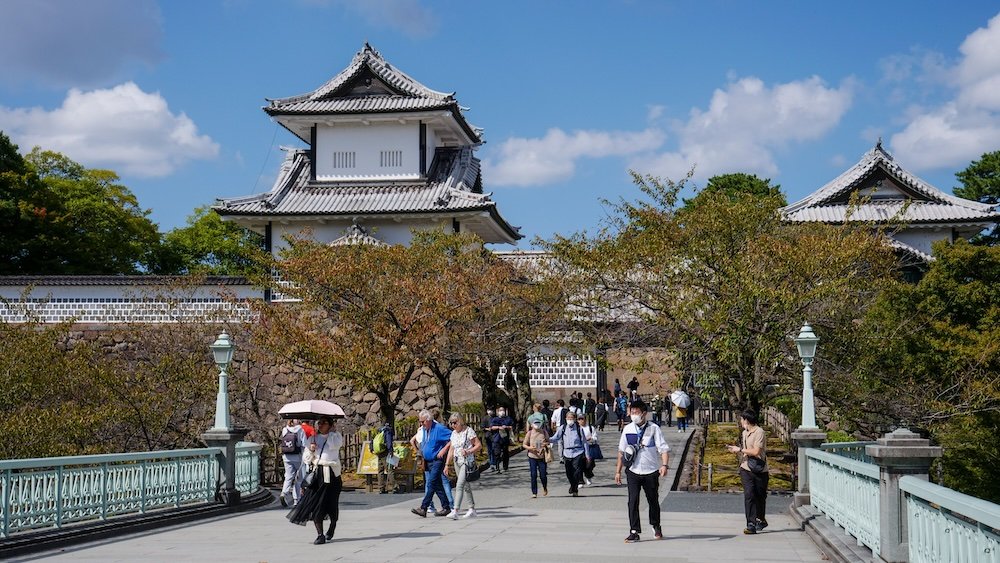
Kanazawa travel questions answered: practical tips, local insight and planning advice
How many days do I really need in Kanazawa to see the main sights?
Honestly. If you want to actually feel the city rather than sprint through it, I’d say two full days (two to three nights) in Kanazawa is the sweet spot. Day one covers the big trio – Kenrokuen Garden, Kanazawa Castle Park and one of the teahouse districts – plus Omicho Market and an izakaya dinner. Day two lets you go deeper into samurai districts, a museum or two and a quirky stop like the Ninja Temple or a craft studio. If you are thinking about day trips to places like Shirakawa-go or Kaga Onsen, add a third night so you are not racing the clock.
When is the best time of year to visit Kanazawa for weather and scenery?
It depends. Kanazawa has a humid, rainy climate with proper snowy winters, so the best time is a trade off between scenery and how much moisture you are willing to tolerate. Spring from late March to May brings cherry blossoms and fresh greens with mild temperatures, while autumn from late October to mid November gives you crisp air and fiery foliage around Kenrokuen and the castle. Summers are hot, humid and often wet, and winters are cold with regular snowfalls, which can be magical in the gardens if you are dressed for it. The city also has big events like the Hyakumangoku Festival in early June, which is fun but overlaps with the start of the rainy season, so I would pack a compact umbrella no matter when you visit.
Is Kanazawa worth visiting if I’ve already been to Tokyo and Kyoto?
Absolutely. Kanazawa usually feels like Kyoto’s quieter cousin; you still get samurai districts, teahouses, temples and stunning gardens, but with fewer crowds and a more compact layout. If you are into food, traditional crafts and slow wandering, it is a fantastic contrast to the megacity energy of Tokyo and the temple overload of Kyoto. I especially like it for travellers on a second or third Japan trip who want somewhere atmospheric that still feels very local and lived in.
Can I visit Kanazawa as a day trip from Tokyo, Kyoto or Osaka?
Technically. You can dash up from Tokyo on the Hokuriku Shinkansen, which takes about two and a half hours each way on the fastest Kagayaki services, but that makes for a long, rushed day with more than five hours on trains. From Kyoto or Osaka you now typically ride the Limited Express Thunderbird to Tsuruga and transfer to the Hokuriku Shinkansen on to Kanazawa, which again ends up around two and a half to three hours each way depending on connections. You will see more, and feel far less fried, if you give Kanazawa at least one night, ideally two, rather than treating it as a tick box day trip.
What’s the easiest way to get to Kanazawa from Tokyo, Kyoto and Osaka?
Easiest. From Tokyo the straightforward option is the Hokuriku Shinkansen from Tokyo or Ueno Station straight to Kanazawa Station; trains are fast, frequent and well signed in English, so it is very beginner friendly. From Kyoto or Osaka the pattern since 2024 is to take the Thunderbird limited express to Tsuruga and then transfer to the Hokuriku Shinkansen up to Kanazawa, which sounds fiddly on paper but is well organised in practice with clear signage. Long distance buses can be cheaper if you are on a tight budget and there are also flights into nearby Komatsu Airport with bus links into town, but for most travellers the train combo wins for comfort and reliability.
Do I need the Kanazawa Loop Bus day pass, or can I just walk everywhere?
Not really. Kanazawa is very walkable and if you enjoy wandering you can happily link Kenrokuen, the castle area, Omicho Market and at least one teahouse or samurai district on foot in a single day. Where the buses shine is when your feet start complaining or you want to hop between clusters quickly; the Kanazawa Loop Bus charges a flat fare per ride of about 200 yen for adults, and there is a Kanazawa Bus one day pass that covers the loop and select routes for 500 yen for adults and 250 yen for children. If you expect to ride the bus three times or more in a day the pass usually pays for itself and keeps things simple, but if you are a keen walker you may only need buses when the weather turns foul.
Which area of Kanazawa is the best place to stay for first-time visitors?
Personally. For a first visit I like staying near Kanazawa Station, simply because you have easy access to trains, buses, luggage lockers and a good concentration of restaurants and shops. If you value atmosphere over pure convenience, look at small hotels, ryokan or guesthouses within walking distance of Kenrokuen, the castle or the Higashi and Nishi Chaya districts so you can step out into quiet streets in the evening. Travellers who are nervous about navigating tend to feel more relaxed by the station, while those who already know Japan a bit often love waking up right in the old town and walking everywhere, even if it means one bus ride back at the end of the day.
Is Kanazawa an expensive city to visit and what daily budget should I plan?
Surprisingly. Kanazawa is not as pricey as Tokyo or Kyoto, but it is still Japan, so expect clean but compact rooms and food that adds up quickly if you eat every meal out. As a rough guide, a budget backpacker who cooks a little and mostly uses buses might get by on eight to ten thousand yen per day before accommodation, a mid range traveller who enjoys sit down meals and a couple of paid attractions might land in the twelve to eighteen thousand yen range, and it is very easy to spend more if you are splurging on ryokan stays, kaiseki dinners and lots of shopping. The nice thing is that you can eat well at Omicho Market, pick up picnic lunches and use the bus pass to keep costs under control.
Is Kanazawa safe for solo travellers, including at night?
Yes. Kanazawa feels very safe by global standards and violent crime against tourists is extremely rare; you are far more likely to misplace your umbrella than your wallet. Normal common sense still applies – keep an eye on your belongings in busy places like markets or stations, do not leave phones unattended on café tables and go easy on late night solo drinking if you are not used to Japanese bars. The bigger things to be aware of are weather, such as heavy rain, snow and slippery pavements in winter, and the fact that Japan is an earthquake prone country, so it is worth glancing at the safety instructions in your hotel room.
Is Kanazawa a good destination for families travelling with kids?
Definitely. Kids tend to love the mix of serious culture and slightly quirky stops in Kanazawa – the Ninja Temple’s hidden staircases, the Ninja Weapon Museum, gold leaf souvenirs, sweet shops, markets, buses that loop around town and plenty of snack breaks. Distances are short enough that little legs do not get completely destroyed and there are lots of opportunities to duck into cafés, department stores or the station building to warm up or cool down depending on the season. If you are travelling with grandparents as well, I like structuring days as one big morning outing, a proper rest back at the hotel and then a gentler evening stroll plus dinner.
How accessible is Kanazawa for travellers with limited mobility?
Candidly. Kanazawa is easier than many old Japanese towns but still not perfect if you have limited mobility. The station, modern museums and most large hotels are well equipped with elevators, ramps and accessible toilets, and the Loop Bus helps you cover longer distances without big walks. Where it gets trickier is in the samurai and teahouse districts, which often have narrow, uneven lanes, stone steps and historic houses with steep staircases and low doorways. If you or someone in your group uses a wheelchair or struggles with hills, I would plan more time at Kenrokuen, the castle grounds, the station area and modern attractions, and treat the older quarters as optional rather than mandatory.
What local foods should I make a point of trying in Kanazawa?
Come hungry. Kanazawa is very seafood focused thanks to its access to the Sea of Japan, so Omicho Market is the obvious place to dive into ultra fresh sushi, sashimi and white shrimp dishes. Local specialties to look out for include Kanazawa curry, which is thick, rich and a bit sweet and often served under a katsu cutlet, gold leaf topped sweets and ice cream, beautifully presented wagashi with your tea and simple izakaya plates like grilled fish, tempura and seasonal vegetables. If you are not big on raw fish you will still find comfort food at places like Kanazawa curry shops or chains such as Saizeriya, so you will not go hungry.
What should I pack for Kanazawa’s weather, especially in winter and the rainy months?
Layers. Kanazawa is known within Japan for being both rainy and snowy, so think in terms of staying warm and dry rather than relying on a single heavy coat. In the cooler months I would pack a waterproof shell, a warm mid layer, gloves, a beanie and shoes with decent grip for potentially slushy or icy streets; in summer you will want light, breathable clothing plus a compact umbrella or rain jacket for sudden showers. Year round, a small foldable umbrella, quick dry socks and a spare layer make life more comfortable, and if you tend to feel the cold, consider disposable heat packs in winter; you will appreciate them when you are standing still in the gardens or waiting for a bus in the evening.
Which day trip from Kanazawa is best: Shirakawa-go, Kaga Onsen, the Noto Peninsula or Takayama?
Good problem. Each of the classic day trips gives you a different flavour of the region, so the best one really depends on your travel style. Shirakawa-go is the most famous and the easiest to recommend for first timers; it is a UNESCO listed village of steep roofed gassho zukuri farmhouses, reachable by highway bus from Kanazawa in about seventy five minutes each way, with tickets around two thousand eight hundred yen one way, and on busy days you really do want to reserve ahead. Kaga Onsen is ideal if you want hot springs, ryokan pampering and pottery, Takayama is perfect for preserved streets and sake breweries in the mountains and the Noto Peninsula suits people who like long coastal drives and sleepy fishing towns and do not mind slower public transport or renting a car.
Do I need to book tours and tickets in advance for Kanazawa, or can I be spontaneous?
A mix. Inside Kanazawa itself you can be fairly spontaneous; gardens, districts and most museums do not require reservations and you can easily explore on your own with a paper map or your phone. Where you do want to think ahead is for Myoryuji, the Ninja Temple, which only runs visits by timed guided tour and often sells out, and for long distance buses to places like Shirakawa-go, especially in peak seasons and on weekends when seats are limited. If there is a particular tea ceremony, craft workshop or food tour you are excited about I would also reserve it in advance, and then leave the rest of your time unstructured for simply wandering the city and following your nose.
Kanazawa Travel Guide: Final Thoughts
Embracing the City’s Contrasts
Kanazawa is a place where old and new coexist in delicate balance. One moment, you’re strolling through narrow alleys shadowed by wooden teahouses, the next you’re admiring sleek, modern galleries bathed in natural light. This interplay of past and present helps you understand that culture isn’t static, it’s alive and evolving. Notice how the city’s rhythms change with the hour—early mornings for peaceful shrines, late afternoons for bustling markets, and evenings for quiet contemplation beneath lantern-lit streets.
- Observational Tip: Wander a historic district at dawn, explore a modern museum by midday, and savor a contemporary café at dusk.
- Cultural Insight: Talk to an artisan, learn about samurai values, and ask a barista about local coffee trends.
- Photo Suggestion: Capture traditional architecture next to cutting-edge design, highlighting contrasts that define Kanazawa.
Tip: Slow down; give yourself time to notice how tradition and innovation dance hand in hand throughout the city.

Planning the Next Visit
You’ll likely think about what you missed in Kanazawa: a certain festival in another season, a special shop you heard about too late, a garden you only glimpsed at dusk. That lingering curiosity hints that one visit rarely suffices. With each return, the city reveals new layers—fresh exhibitions, seasonal blooms, and evolving culinary scenes. Knowing that Kanazawa can surprise you again and again transforms your departure into a vow to come back and explore further.
- Seasonal Approaches: Consider cherry blossoms in spring, festivals in summer, or colorful foliage in autumn for your next trip.
- Deeper Dives: Focus on a specific district, immerse in artisan workshops, or follow a themed itinerary next time.
- Memory Keepers: Save maps, keep restaurant business cards, and maintain a list of must-sees for future reference.
Tip: Keep a small travel journal; jotting down impressions, addresses, and dreams ensures your next Kanazawa adventure starts on the right foot.
